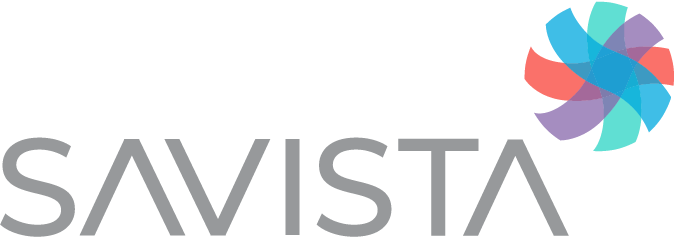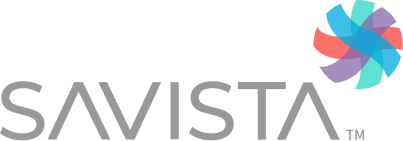This article was originally published in Healthcare Business Today
John Hataway | Senior Director - Continuous Improvement & Automation
The future of the healthcare revenue cycle involves leveraging emerging technology while maintaining the human-centric element of healthcare. Emerging capabilities in artificial intelligence (AI), blockchain and predictive analysis can – and should – be introduced into the healthcare revenue cycle to create a more intelligent, efficient and adaptive process. But first, it’s crucial to understand what these tools can and can’t do, as well as the risks and limitations for implementation.
Artificial Intelligence
It's crucial to understand what AI is and, just as importantly, what it isn't. Artificial intelligence is a field of computer science that focuses on the creation of intelligent machines that can perform tasks usually requiring human intelligence. These tasks include learning, reasoning, problem-solving, perception, and language understanding. It can automate repetitive tasks, analyze large volumes of data quickly and accurately, and make complex calculations or predictions. Despite these capabilities, however, it remains a tool that requires the guidance of designers and operators to function most effectively. It is designed to assist and enhance human capabilities, not replace them.
For example, picture a system that can auto-generate accurate bills, swiftly handle claims, and even predict which claims are likely to be denied. Not only will this save time and resources, but it also allows healthcare providers to focus more on patient care. The goal of AI in healthcare isn’t to replace healthcare providers or administrators, but to give them tools that can make their work more efficient, accurate, and impactful. It enhances human capabilities by allowing people to spend more time leveraging expertise in their day-to-day activities.
However, AI isn't without its limitations. Its effectiveness largely depends on the quality of the data input, including training on how it should understand and apply that data. As a result, implementing AI can be costly (especially in cases where highly specialized models and detailed training are required), and there can be regulatory hurdles to overcome, especially concerning patient data.
Looking ahead, we anticipate enhanced accuracy and more sophisticated predictive analytics. We also foresee a future where AI integrates seamlessly into existing workflows, enabling a truly efficient and streamlined revenue cycle management process.
Blockchain
Blockchain is a type of distributed ledger, or decentralized database, that keeps records of digital transactions. Unlike traditional databases, blockchain's distributed nature makes it highly secure and transparent. Every transaction is recorded across multiple copies of the ledger that are distributed over many computers, known as nodes. Once a transaction is recorded, it becomes virtually immutable. This ensures the integrity of the data and reduces the possibility of fraud.
The key features of blockchain – its security, transparency, and immutability – make it a potent tool for addressing many challenges in the healthcare revenue cycle.
For instance, it could be used to create a secure and transparent billing system, reducing the likelihood of errors and disputes. Blockchain could also make patient data-sharing more secure, improving coordination of care and accuracy of coding and billing. It also brings a new level of traceability to transactions, ensuring that each party involved can trust the data, reducing fraud and enhancing overall efficiency.
As we continue to explore this technology, we'll likely uncover even more innovative ways that blockchain can be utilized within the healthcare revenue cycle. Let's walk through a typical revenue cycle process and see how blockchain can revolutionize each step:
- Patient appointment scheduling: The process begins when a patient schedules an appointment. In our blockchain-enhanced system, this information becomes a part of a secure, immutable ledger, ensuring transparency and traceability right from the start.
- Secure patient data sharing: When the patient visits the healthcare provider, necessary medical data is securely shared across providers, reducing potential discrepancies and aiding in better care coordination.
- Coding and billing: Once the patient's treatment is completed, blockchain can aid in the coding and billing process. Each service rendered can be accurately recorded on the blockchain, ensuring the transparency and accuracy of the billing process.
- Claims submission: The medical bill, or claim, is then sent to the insurance provider. Given the transparency and accuracy of data recorded on the blockchain, there is less room for disputes, potentially leading to a smoother and faster claims approval process.
- Payment processing: Finally, once the claim is approved, the payment from the insurance provider can be tracked via the blockchain, ensuring transparency and quick reconciliation.
In this blockchain-enhanced workflow, each transaction is securely recorded, and every stakeholder has access to reliable, transparent data, leading to fewer disputes, increased efficiency, and a better patient experience.
Predictive Analytics
Predictive analytics is a practice that uses data, statistical algorithms, and machine learning techniques to identify the likelihood of future outcomes based on historical data. In the context of healthcare, predictive analytics can provide us with insights into patient payment behavior, claims denial patterns, and more. This enables us to identify potential revenue leakage points and take preventive measures.
Predictive analytics has various applications in healthcare revenue cycle management. Here are practical examples:
- Risk stratification for high-cost claims: Predictive models can identify patients who are likely to generate high-cost claims based on their medical history, social determinants of health, and other data. This allows healthcare providers to proactively manage these patients, potentially reducing costly hospital admissions or readmissions.
- Prediction of claim denials: Predictive analytics can analyze historical data to identify patterns in claim denials. These patterns can indicate issues such as coding errors or missing documentation that can be addressed to reduce future denials.
- Estimation of patient payment ability: By analyzing socio-economic data, predictive analytics can help assess a patient's ability to pay their medical bills. This can inform discussions about payment plans or charity care, helping to avoid bad debt write-offs and improve overall revenue.
Use Cases of Predictive Analytics
Risk Stratification for High-Cost Claims
Identify patients likely to generate high-costs claims
Providers manage these patients to reduce costly hospital admissions or readmissions
Clear, well-defined underlying processes
Analyze historical data to identify patterns
Indicate issues such as coding issues or missing documentation
Reduce future denials
Balance of technology and human elements
Analyze socio-economic data
Inform discussions on payment plans or charity care
Reduce bad-debt write offs
Each of these predictive analytics applications enables proactive and data-driven decision making, leading to more efficient and profitable revenue cycle management.
Risks in Transitioning to Advanced Technologies
In thinking about the benefits of incorporating the capabilities of emerging technology into our workflows, we must balance those positive aspects with an understanding of the potential risks.
- Patient trust and acceptance: Healthcare is a highly personal and trust-based field. Introducing new technologies, particularly those that are directly patient-facing, may potentially create apprehension and resistance among patients, especially concerning their data privacy and quality of care. Transparent communication about how these technologies benefit patient care and safeguard patient data is essential.
- Organizational resistance to change: As with any change, there can be resistance from within the organization (whether providers, staff, or leaders). Some may question the reliability of these technologies or fear that it will depersonalize care. Introducing changes gradually, providing training, and demonstrating the benefits can help overcome this resistance.
- Over-reliance on technology: As we leverage these technologies to enhance efficiency and accuracy, we must be careful not to lose the human touch that's so crucial in healthcare. Technology should aid, not replace, the patient-provider relationship.
- Potential impact on employment: Automation could lead to concerns about job security among staff. It's important to communicate that these technologies will augment their roles, not replace them, and that there will be upskilling opportunities.
The goal of artificial intelligence is to make us better at what we do by doing what it does best: processing and learning from large volumes of data quickly and accurately. However, this is not an easy button to magically solve all inefficiencies and problems. Human connection, judgment, empathy, and intuition are irreplaceable and continue to be the heart of healthcare.




